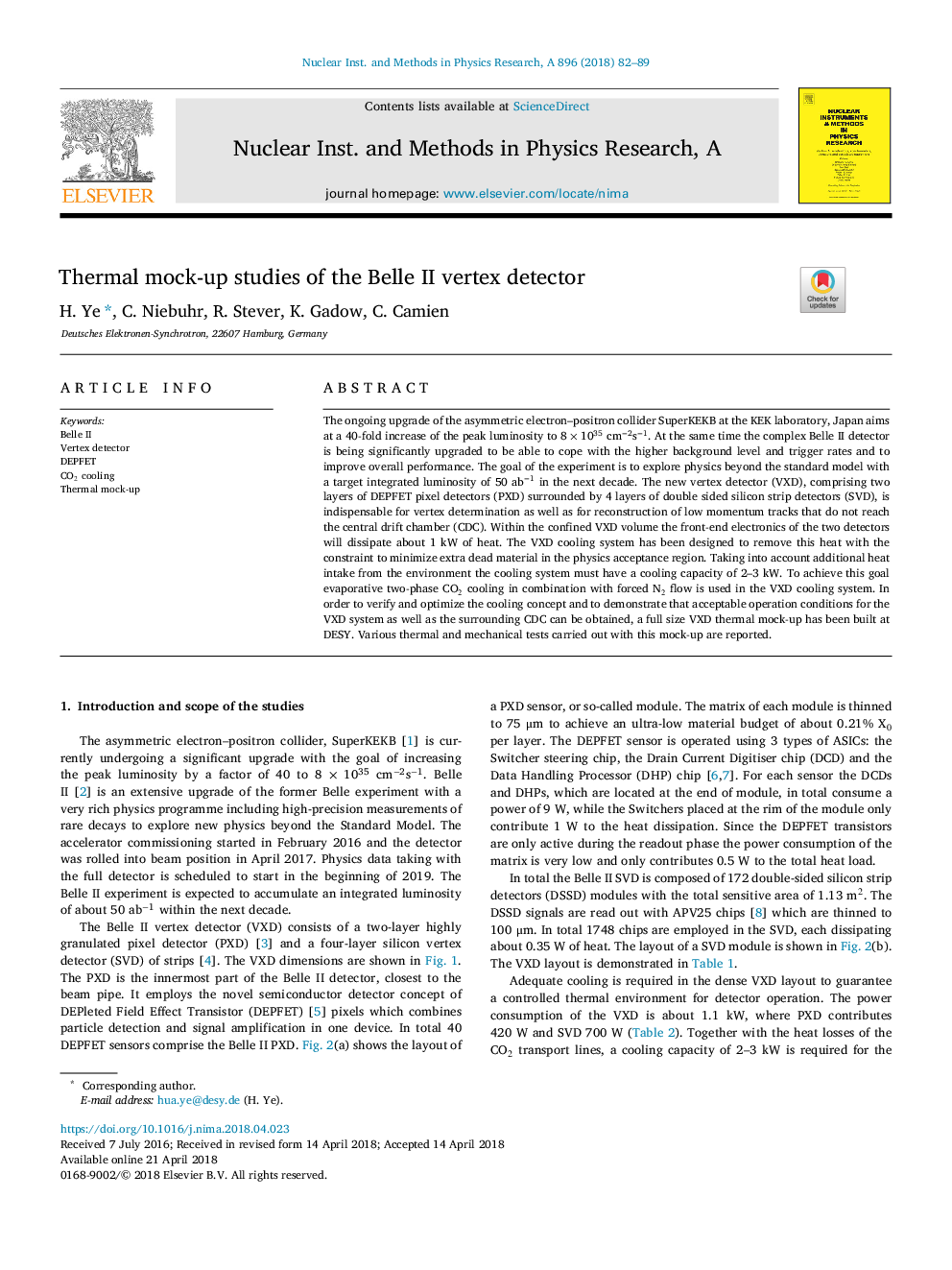| Article ID | Journal | Published Year | Pages | File Type |
|---|---|---|---|---|
| 8166222 | Nuclear Instruments and Methods in Physics Research Section A: Accelerators, Spectrometers, Detectors and Associated Equipment | 2018 | 8 Pages |
Abstract
The ongoing upgrade of the asymmetric electron-positron collider SuperKEKB at the KEK laboratory, Japan aims at a 40-fold increase of the peak luminosity to 8Â ÃÂ 1035Â cmâ2sâ1. At the same time the complex Belle II detector is being significantly upgraded to be able to cope with the higher background level and trigger rates and to improve overall performance. The goal of the experiment is to explore physics beyond the standard model with a target integrated luminosity of 50Â abâ1 in the next decade. The new vertex detector (VXD), comprising two layers of DEPFET pixel detectors (PXD) surrounded by 4 layers of double sided silicon strip detectors (SVD), is indispensable for vertex determination as well as for reconstruction of low momentum tracks that do not reach the central drift chamber (CDC). Within the confined VXD volume the front-end electronics of the two detectors will dissipate about 1Â kW of heat. The VXD cooling system has been designed to remove this heat with the constraint to minimize extra dead material in the physics acceptance region. Taking into account additional heat intake from the environment the cooling system must have a cooling capacity of 2-3Â kW. To achieve this goal evaporative two-phase CO2 cooling in combination with forced N2 flow is used in the VXD cooling system. In order to verify and optimize the cooling concept and to demonstrate that acceptable operation conditions for the VXD system as well as the surrounding CDC can be obtained, a full size VXD thermal mock-up has been built at DESY. Various thermal and mechanical tests carried out with this mock-up are reported.
Keywords
Related Topics
Physical Sciences and Engineering
Physics and Astronomy
Instrumentation
Authors
H. Ye, C. Niebuhr, R. Stever, K. Gadow, C. Camien,
